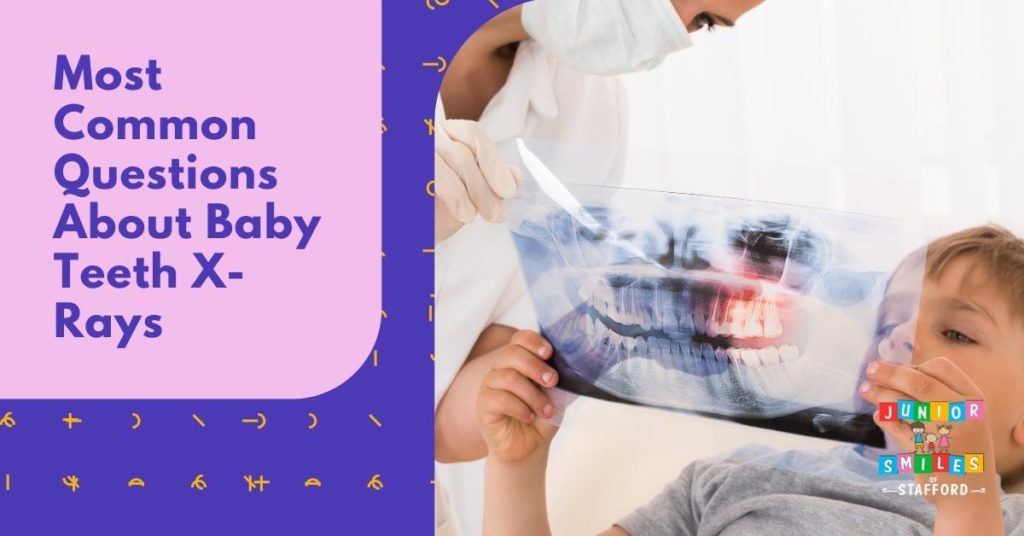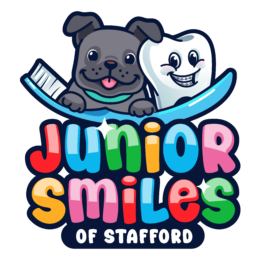The Importance of Children’s Teeth X-Rays

In order to remedy problems, they must first be identified. That’s why a comprehensive dental checkup would not be complete without the use of x-rays. Early detection and treatment of dental disorders can alleviate discomfort, improve long-term oral health, and reduce treatment costs. By utilizing x-rays, not only may cavities be identified, but also infections, cysts, tumors, additional or missing teeth, and other information on the development of the teeth as a whole.
Additionally, compared to adults, children’s teeth are more prone to dental decay due to their fast growth. And having access to dental X-rays allows dentists to better assess the unique requirements of children, preventing any oral health issues from getting worse. In this blog article, we will explore the many types of x-rays used for children and the benefits of using them in pediatric dentistry. Read on to find out more.
Role of X-Rays in Pediatric Dentistry
In pediatric dentistry, X-rays play a crucial role in monitoring and guiding the development of a child’s oral health. They provide invaluable insights, especially when it comes to understanding how baby teeth transition into adult teeth. X-rays can reveal whether babies are born with all their teeth in their skull and how these teeth are positioned even before they erupt. This is particularly important in identifying cases of underdeveloped teeth or assessing the pediatric anterior teeth numbers for any anomalies.
Furthermore, X-rays can help in tracking the development of children’s molars, offering a clear picture of baby teeth in various stages, including baby teeth eruption pictures. These images are essential for dentists to determine the right time for interventions, such as addressing pacifier teeth issues. They also help in understanding the process of toddler tooth development and answering common questions like when do kids get teeth
Benefits of Getting a Baby Teeth X-Ray
Since X-rays can look through the gums and reveal issues, they are useful until your kid is two or three years old, when their main teeth will have fully erupted. This is crucial to prevent more issues and treat dental problems promptly. Other advantages of X-rays include these:
Monitoring Tooth Development and Eruption
X-rays provide a clear picture of baby teeth and their development, helping dentists monitor the eruption pattern. This is especially useful in tracking the health of the kid’s teeth and ensuring that the primary to permanent teeth transition occurs smoothly. By regularly observing these changes, dentists can anticipate and manage potential alignment issues or overcrowding early on.
Identifying Abnormalities or Infections
If a problem with the jaw or the mouth’s anatomy is not obvious during a regular checkup, an X-ray can help find it. Their ability to detect illness in the gums or tooth roots is vital in pediatric dentistry. When it comes to kids, this is especially crucial since they might not be able to express how painful their teeth are.
Planning Orthodontic Treatments
In pediatric dentistry, X-rays are valuable for planning future orthodontic treatments. They give dentists insights into the alignment of children’s molars and the space available for permanent teeth. This foresight is crucial in devising effective treatment plans that will guide the child’s dental health into adolescence.
Educational Tool for Parents and Children
X-rays serve as an excellent educational tool for both parents and children. They offer a visual representation, such as baby teeth eruption pictures, to explain the dental development process. This aids in fostering better dental hygiene practices from a young age, addressing questions about the importance of dental hygiene and oral health issues.
Types of X-Rays for Children’s Teeth
For children who are at a high risk of dental decay, the American Academy of Pediatrics advises X-rays and exams every six months. Dentists utilize the following types of X-rays:
Bitewing X-rays
Bitewing X-rays are a common type used in pediatric dentistry, primarily focused on revealing cavities between teeth. Additionally, it can also help dentists see changes in the jawbone caused by gum disease. By taking a photo of each side of the jaw, the X-ray creates one cohesive image, so your dentist can get a good look. Furthermore, Bitewing X-rays are quick and comfortable for children, making them an ideal choice for regular dental check-ups.
Panoramic X-rays
Panoramic X-rays offer a broad view of the entire mouth, including teeth, jaws, and surrounding structures. This type of X-ray is particularly useful in evaluating the growth and development of jaws, an essential aspect of toddler tooth development. Panoramic X-rays are also commonly used for developing orthodontic treatment plans or diagnosing developmental issues.
Periapical X-rays
Periapical X-rays provide a detailed view of one or two specific teeth, making them perfect for examining the root structure and surrounding bone. They are particularly helpful in cases where detailed imagery is needed, such as investigating an injury or ongoing tooth pain.
Occlusal X-rays
Occlusal X-rays, or sometimes called palatal X-rays, take a photo of the entire arc of teeth on either the bottom or top jaw. This gives dentists a way to look at tooth development and placement. They are often used to find extra teeth, teeth that have not yet broken through the gums, jaw fractures, or cleft palate. They also provide a comprehensive view, essential for a holistic assessment of a child’s oral health.
Children’s Teeth X-Ray: Addressing Common Concerns
When do kids get a dental x-ray?
Kids usually get their first dental X-ray around the age of five or six, which is typically when their permanent teeth start to come in, replacing baby teeth. However, if a child is at high risk for dental problems, such as those with early signs of tooth decay, a history of children’s molars issues, or a family history of dental problems, a dentist might suggest an X-ray at an earlier age. The decision to take an X-ray in children also depends on their individual oral health needs, which a pediatric dentist can assess best, often taking into account factors like how many teeth do kids have and their general toddler tooth development.
Are dental x-rays necessary for babies?
Dental X-rays for babies are not routinely necessary but can be recommended in certain situations. If a baby shows signs of oral health issues, such as underdeveloped teeth or potential concerns with how teeth form, a dentist might suggest an X-ray for a closer examination. However, these cases are relatively rare, and X-rays are usually reserved for older children unless specific dental concerns, like abnormalities in baby teeth eruption, warrant a closer look at a baby’s oral development.
Are there any risks on dental x-rays for babies?
While dental X-rays are generally safe, there are minimal risks associated with radiation exposure, even with the low levels used in modern dental radiography. For babies, whose bodies are still developing, it’s particularly important to limit exposure to any form of radiation. Pediatric dentists, therefore, use X-rays sparingly and with utmost caution, employing protective measures such as lead aprons and thyroid collars to minimize risk.
Are dental x-rays safe for babies?
Dental X-rays are considered safe for babies when used judiciously and with proper safety measures in place. Modern dental X-ray machines emit extremely low levels of radiation, and pediatric dentists take extra precautions, such as using leaded coverings, to protect the baby’s body from exposure. While it’s essential to minimize any unnecessary exposure to radiation, the benefits of diagnosing and treating oral health issues early with the help of X-rays often outweigh the minimal risks involved, especially in cases where visual examination alone might not provide sufficient information about the baby’s oral health.
Trust Junior Smiles of Stafford for Your Child’s Dental Care
Understanding the importance of children’s teeth X-rays is crucial for maintaining their long-term oral health. As we’ve seen, dental X-rays play a significant role in early detection and treatment of various dental conditions, ensuring that your child’s teeth develop correctly and healthily. From monitoring tooth development and eruption to identifying potential oral health issues and planning future orthodontic treatments, X-rays are an invaluable tool in pediatric dentistry. They not only aid in immediate dental care but also in educating both parents and children about the importance of maintaining good oral hygiene from a young age.
At Junior Smiles of Stafford, we understand the unique dental needs of your children. Our team of skilled pediatric dentists uses the latest X-ray technology to ensure the best care for your child’s oral health. Whether it’s their first dental X-ray or a routine check-up, we provide a comfortable, caring, and child-friendly environment. We believe in not just treating teeth but nurturing smiles that last a lifetime.

